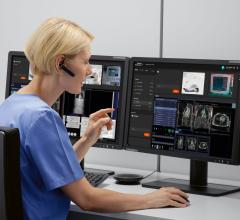The Society of Nuclear Medicine and Molecular Imaging’s 2013 Annual Meeting marks the unveiling of the successful application of a new preclinical hybrid molecular imaging system—single photon emission tomography and magnetic resonance (SPECT/MR)—which has exceptional molecular imaging capabilities in terms of potential preclinical and clinical applications, technological advancement at a lower cost, and reduction of patient exposure to ionizing radiation.
“We are pioneering simultaneous SPECT and MR imaging technologies now demonstrated in preliminary small animal studies,” said Benjamin M.W. Tsui, Ph.D., director of the division of medical imaging physics in the department of radiology, and a professor of radiology, electrical and computer, biomedical engineering, and environmental health sciences at Johns Hopkins University in Baltimore, Md. “We have been building the technology with our industrial partner, TriFoil Imaging—formerly the preclinical business of Gamma Medica, Inc.—for the past five years and have sufficient data now to show that it works. This presents a unique multimodality system that images mice down to a spatial resolution of less than1 mm at high detection efficiency.”
SPECT/MR represents a completely different imaging modality from other hybrid systems like positron emission tomography and computed tomography (PET/CT) and simultaneous PET and magnetic resonance (PET/MR) by allowing hybrid imaging with biomarkers labeled with a wide range of radionuclides. SPECT/MR has a variety of potential applications, including but not limited to imaging for cancer, cardiovascular and neurological diseases, thyroid and other endocrine disorders, trauma, inflammation and infection.
To construct a SPECT insert that works in the magnetic field of an MR system, the developers integrated 16 x 16 pixel and 1.6 mm pixel pitch cadmium zinc telluride (CZT) solid-state detectors that directly convert incoming photons into electrical signals that are not affected by the static magnetic field. The SPECT insert also houses a state-of-the-art “multi-pinhole” collimator that provides both high spatial resolution and capacity for the detection of photons from small animals injected with available or novel nuclear medicine biomarkers that use radionuclides to convey physiological functions of the body. Unlike PET, SPECT has the added bonus of being able to detect photons of different energies from multiple radionuclide-labeled biomarkers for fully customized and application-specific multifunctional imaging.
Other major benefits of the SPECT/MR system include the elimination of the radiation dose associated with CT and the much lower cost of building the technology compared to PET/MR, which cost about $5.5 million for a clinical system. Tsui remarks, though, that the technology is meant not to supplant other technologies but rather to further diversify options for biomedical investigators and clinicians to optimize research and patient care. SPECT/MR could roll out into human trials in the not-too-distant future. “We are confident that with sufficient funding we can build a SPECT/MR system for human brain studies in about two years and begin clinical studies by the third year,” Tsui estimated.
Scientific Paper 595: Benjamin Tsui, Jingyan Xu, Andrew Rittenbach, Abdel-Monem El-Sharkawy, William Edelstein, Department of Radiology, Johns Hopkins University, Baltimore, MD; Kevin Parnham, James Hugg, Gamma Medica, Northridge, CA, “A completed SPECT/MR insert for simultaneous SPECT/MR imaging of small animals,” SNMMI’s 60th Annual Meeting, June 8–12, 2013, Vancouver, British Columbia.
For more information: www.snmmi.org


 April 10, 2024
April 10, 2024 






![(A) PET images of [68Ga]Ga-DOTA-ZCAM241 uptake at baseline and 3, 7, and 12 days after injection as inflammatory arthritis developed in single representative individual mouse. Images are normalized to SUV of 0.5 for direct comparison between time points. (B) CD69 immunofluorescence Sytox (Thermo Fisher Scientific) staining of joints of representative animals during matching time points.](/sites/default/files/styles/feed_medium/public/PET%20Tracers.jpeg?itok=P5Di6MIe)

